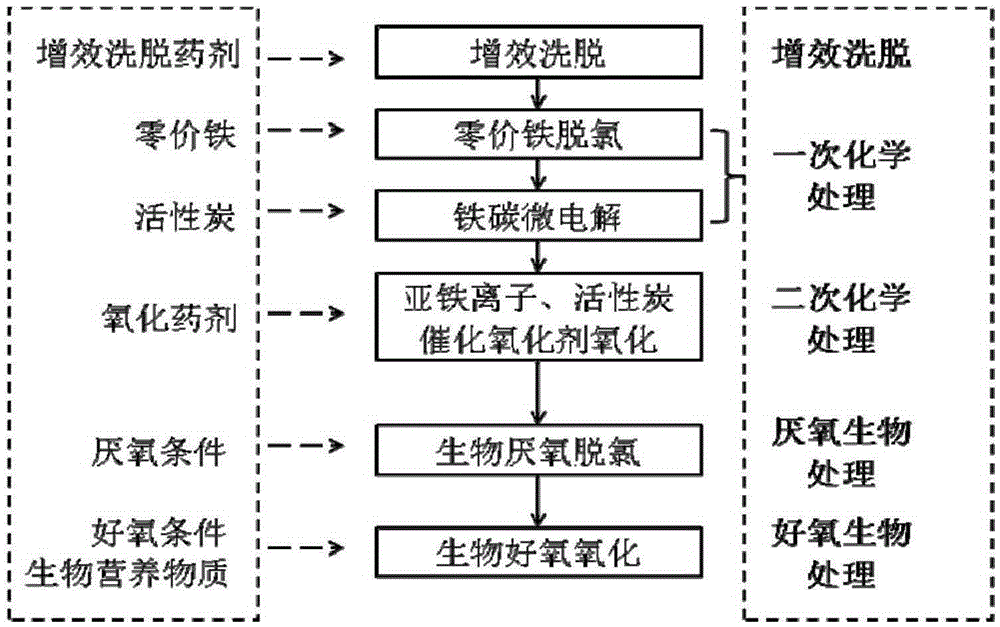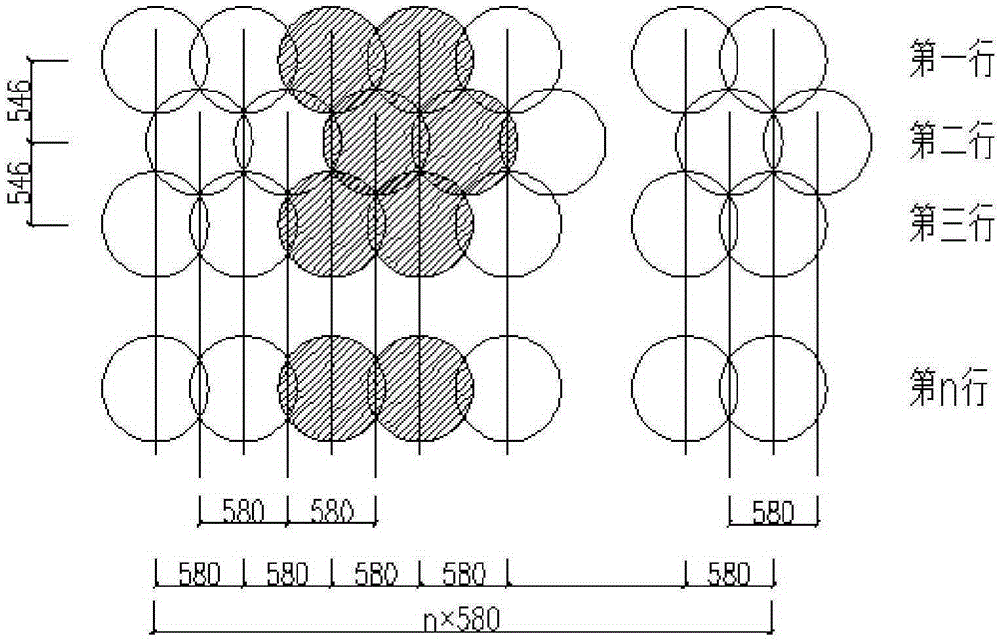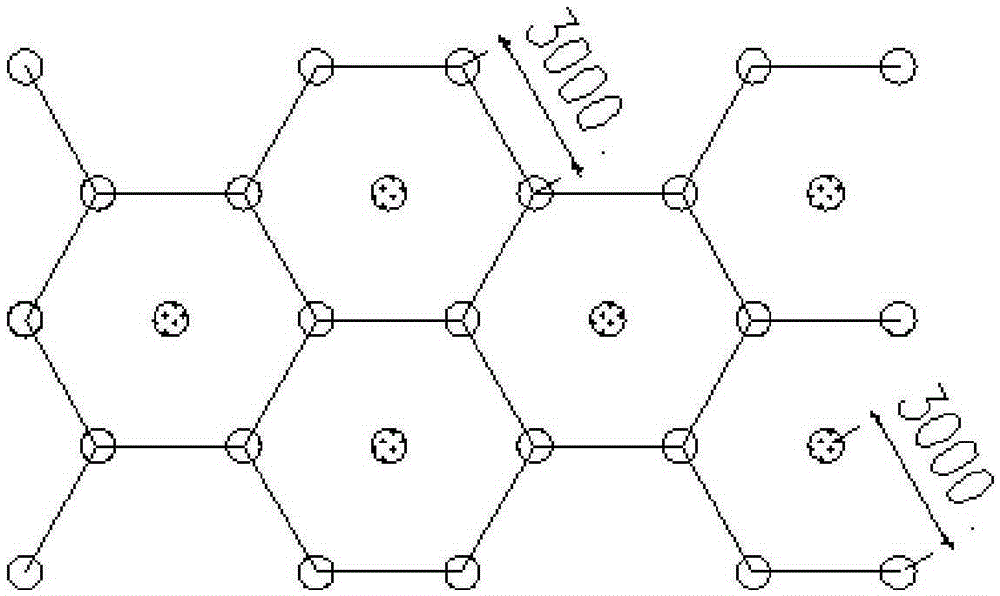Method for restoring polychlorinated biphenyl polluted site soil
A PCB and contaminated soil technology, applied in the restoration of contaminated soil, etc., can solve the problem of unsatisfactory restoration of PCB-contaminated soil and achieve effective restoration
- Summary
- Abstract
- Description
- Claims
- Application Information
AI Technical Summary
Problems solved by technology
Method used
Image
Examples
Embodiment 1
[0058] The PCB-contaminated site was originally a dismantling site for electronic waste. During the dismantling process for many years, PCBs leaked and polluted the soil around the site. In the polluted area, PCB pollution is common in the 3m soil from the surface to the ground. The maximum concentration of PCBs in the contaminated soil is 68mg / kg, the minimum is 5mg / kg, and the average value is 43mg / kg. Treatment method Remediation of polluted soil.
[0059] Step 1) Synergistic elution:
[0060] In the in-situ restoration site, the injection, mixing and dosing plane design is carried out according to the machine model of the stirring and dosing pile. In this embodiment, a stirring pile leaf disc with a diameter of 700 mm is used, and the pile distance in each direction is 580 mm. For the position diagram of the pile hole of the stirring pile machine, see the attached figure 2 . According to the design drawings, use a total station to accurately locate and draw lines at th...
Embodiment 2
[0076] The PCB-contaminated site was originally a power capacitor storage site, which was limited by factors such as storage conditions and management levels, and the storage exceeded the design period. During the storage process, some waste capacitors were corroded, causing PCB leakage to pollute the surrounding area of the storage site. soil, and will further threaten the health of surrounding residents and the ecological environment. In the polluted area, PCB pollution is common in the 30cm soil from the surface to the ground. The maximum concentration of PCBs in the contaminated soil is 206mg / kg, the minimum is 85mg / kg, and the average is 180mg / kg.
[0077] Step 1) Synergistic elution:
[0078] Build an ex-situ treatment workshop at the restoration site. The treatment workshop adopts a commercially available air-supported greenhouse. The air-supported greenhouse is an air shed formed by using an air pressure 0.2%-0.3% higher than the atmospheric pressure. There are pillars...
Embodiment 3
[0093] In the PCB polluted site, PCB pollution is common in the 5m soil from the surface to the ground in the contaminated area. The maximum concentration of PCBs in the contaminated soil is 146mg / kg, the minimum is 24mg / kg, and the average value is 108mg / kg. The in-situ treatment method was used to remediate the soil of the polluted site. For the specific method, refer to Example 1, wherein 50 L of synergistic eluent was added to each ton of contaminated soil, and the synergistic eluent was 1.5 mol / L sodium lauryl sulfate aqueous solution. Add 45mol of pure iron powder per ton of polluted soil, and the molar ratio of powdered activated carbon to pure iron powder is 1.5:3. Add 60L of oxidizing agent aqueous solution to each ton of polluted soil, and the oxidizing agent solution is 3mol / L hydrogen peroxide / potassium permanganate (molar ratio: 1:1) mixed solution. Add 1 kg of biological nutrients to each ton of contaminated soil. The carbon source of biological nutrients is ind...
PUM
| Property | Measurement | Unit |
|---|---|---|
| Depth | aaaaa | aaaaa |
| Diameter | aaaaa | aaaaa |
Abstract
Description
Claims
Application Information
 Login to View More
Login to View More - R&D
- Intellectual Property
- Life Sciences
- Materials
- Tech Scout
- Unparalleled Data Quality
- Higher Quality Content
- 60% Fewer Hallucinations
Browse by: Latest US Patents, China's latest patents, Technical Efficacy Thesaurus, Application Domain, Technology Topic, Popular Technical Reports.
© 2025 PatSnap. All rights reserved.Legal|Privacy policy|Modern Slavery Act Transparency Statement|Sitemap|About US| Contact US: help@patsnap.com



